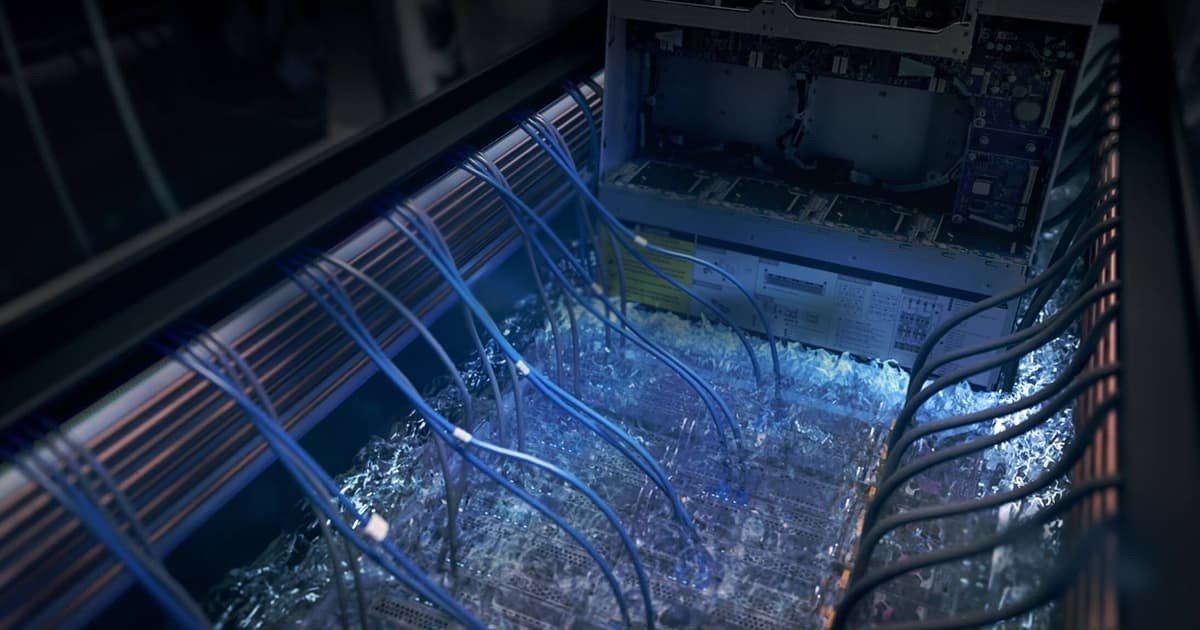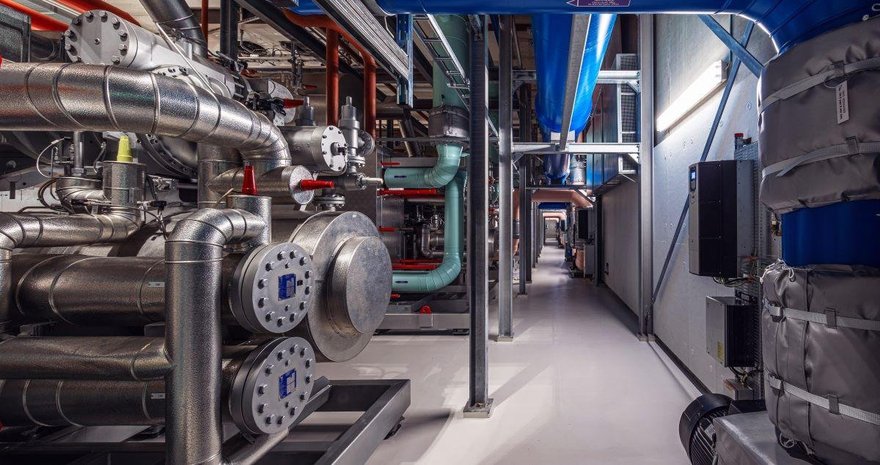History of Refrigerant Gases in Data Centers
Precision Air Conditioning: A Journey from R-12 to HFOs
Precision air conditioners are essential for keeping data centers cool and running smoothly.
These units, designed to precisely control temperature and humidity, rely on direct expansion (DX) systems that use refrigerant gases to absorb and release heat.
But have you ever wondered which gases are used, how they have changed over time, and why?
In this article, we tell the story of refrigerants used in precision DX equipment—from their beginnings to the most modern ones—adding environmental context and the standards that have driven these changes. Join us on this journey!
The Pioneers: CFCs and the Birth of Modern Refrigeration
In the 1930s, refrigeration took a giant leap forward with chlorofluorocarbons (CFCs), a game-changing invention. These gases, like R-12, were stable, non-toxic, and efficient—perfect for the early air conditioning systems that eventually evolved into precision equipment for data centers.

- Cronología del R-12: Introducido en 1931 por DuPont bajo la marca Freon, el R-12 dominó durante décadas. Su capacidad para absorber calor lo hizo perfecto para los sistemas DX, que enfrían el aire directamente con un refrigerante. Sin embargo, en los años 70, los científicos descubrieron que los CFC destruían la capa de ozono. 😱 El Montreal Protocol (1987) marcó su sentencia de muerte, prohibiendo su uso gradualmente. Para 1996, el R-12 estaba fuera de circulación en nuevos equipos en la mayoría de los países.
- Why was it discontinued? Besides damaging the ozone layer, CFCs had a high Ozone Depletion Potential (ODP) and a significant Global Warming Potential (GWP), making them unsustainable under new environmental regulations.
- What replaced it? Hydrochlorofluorocarbons (HCFCs), such as R-22, took over as a less harmful alternative for the ozone layer.
The Transition: HCFCs and the Reign of R-22
With CFCs being phased out, HCFCs became the new star. R-22, in particular, became the standard for precision air conditioners in the ’80s and ’90s. This gas was more ozone-friendly (its ODP was much lower than R-12), but it was not without its issues.
- Timeline of R-22: Introduced in the 1950s, R-22 quickly gained popularity. According to ASHRAE Standard 34, which regulates refrigerant nomenclature, R-22 is an HCFC with good energy efficiency and versatility. However, the Montreal Protocol also targeted it, and by 2010, its use in new equipment was banned in many countries, with a full phase-out scheduled for 2030.
- Why was it discontinued? Although less harmful than CFCs, R-22 still had a significant Ozone Depletion Potential (ODP) and a moderate Global Warming Potential (GWP) of around 1810. Environmental regulations, such as the EU’s F-Gas Regulation, drove its replacement to reduce climate impact.
- What replaced it? Hydrofluorocarbons (HFCs), such as R-410A and R-134a, emerged as the next generation of refrigerants.
The HFC Era: R-410A, R-134a, and the Rise of Efficiency
As HCFCs declined, HFCs became the solution for DX systems in the 2000s. These gases did not harm the ozone layer (ODP = 0), making them ideal for compliance with the Montreal Protocol. In precision air conditioners, R-410A and R-134a became the preferred options.

- Timeline of R-410A: Introduced in the 1990s, R-410A was designed as a direct replacement for R-22. According to Vertiv, this HFC offered greater efficiency in DX systems, enabling more compact and powerful equipment. However, its high GWP (2088) has brought it under scrutiny with regulations like the Kigali Amendment (2016), aimed at reducing high-impact climate gases.
- Timeline of R-134a: Also introduced in the 1990s, R-134a was ideal for medium-temperature applications in data centers. Its GWP (1430) was lower than R-410A’s but still high. While still commonly used, it is being phased out in new equipment due to F-Gas Regulation restrictions.
- Why are they being phased out? HFCs have a high GWP, contributing significantly to global warming. The Kigali Amendment and the updated F-Gas Regulation (2024) require reducing the use of gases with a GWP above 150 in many applications by 2030.
- What’s replacing them? Hydrofluoroolefins (HFOs) and low-GWP blends, such as R-1234yf and R-1234ze, are taking the stage.
The Present and Future: HFOs and the Green Revolution
Today, HFOs represent the cutting edge in refrigerants for precision air conditioners. These gases have an extremely low GWP and do not harm the ozone layer, aligning with global sustainability goals. Additionally, manufacturers are exploring HFC-HFO blends to balance efficiency and environmental compliance.
- Timeline of R-1234yf and R-1234ze: Introduced in the 2010s, these HFOs are low-GWP alternatives to R-134a. According to Caloryfrio, R-1234yf has a GWP of 4, and R-1234ze less than 7, making them ideal for complying with the F-Gas Regulation. Although their efficiency is slightly lower, advances in DX equipment design have compensated for this difference.
- Why are they the future? HFOs meet the strictest environmental standards, such as ASHRAE and the F-Gas Regulation. Additionally, their low flammability (A2L classification according to ASHRAE Standard 34) makes them safe for critical applications like data centers.
- Challenges: HFOs are more expensive and require equipment adjustments, such as optimized compressors and valves. However, the pressure to reduce emissions is driving their adoption.

The Role of ASHRAE and Environmental Standards
The American Society of Heating, Refrigerating, and Air-Conditioning Engineers (ASHRAE) has played a key role in this story. Its Standard 34, established in 1956 and adopted by ANSI, standardized refrigerant nomenclature, making identification and regulation easier. For example, the prefix “R” followed by a number (like R-410A) indicates the chemical composition of the gas, helping technicians and manufacturers work with clarity.
ASHRAE has also influenced cooling practices. Since 2004, its thermal guidelines for data centers have expanded acceptable temperature and humidity ranges, reducing the need for excessive cooling and promoting more efficient equipment that uses modern refrigerants. In 2015, ASHRAE recommended operating data centers between 18°C and 27°C with up to 60% relative humidity, allowing greater flexibility to use HFOs in DX systems.
On the other hand, regulations like the Montreal Protocol, the Kigali Amendment, and the F-Gas Regulation have set the pace for these changes. These laws have forced the industry to innovate, moving from CFCs to HCFCs, then HFCs, and now to HFOs, with a clear focus on reducing environmental impact.
Summary: Refrigerants Comparison
| Refrigerant | Type | Year of Introduction | GWP | ODP | Reason for Phase-Out | Replacement |
|---|---|---|---|---|---|---|
| R-12 | CFC | 1931 | ~10,900 | High | Ozone layer damage | R-22 |
| R-22 | HCFC | 1950 | 1,810 | Moderate | Ozone layer damage | R-410A, R-134a |
| R-410A | HFC | 1990 | 2,088 | 0 | High GWP | R-1234yf, R-1234ze |
| R-134a | HFC | 1990 | 1,430 | 0 | High GWP | R-1234yf, R-1234ze |
| R-1234yf | HFO | 2010 | 4 | 0 | In use | – |
| R-1234ze | HFO | 2010 | <7 | 0 | In use | – |
Conclusion: A Cooler and More Sustainable Future
The history of refrigerants in precision air conditioners reflects how technology and environmental awareness have evolved together. From ozone-depleting CFCs to HFOs promising a greener future, each change has been driven by the need to protect our planet. Thanks to standards like those from ASHRAE and international regulations, data centers can keep running without sacrificing the environment. So next time you step into a cool data center, remember there’s a whole story behind that cold air! 😎
Sources
- ASHRAE Standard 34: Refrigerant Gas Nomenclature
- Vertiv: What Does Precision Air Conditioning Mean Today?
- Montreal Protocol
- F-Gas Regulation



